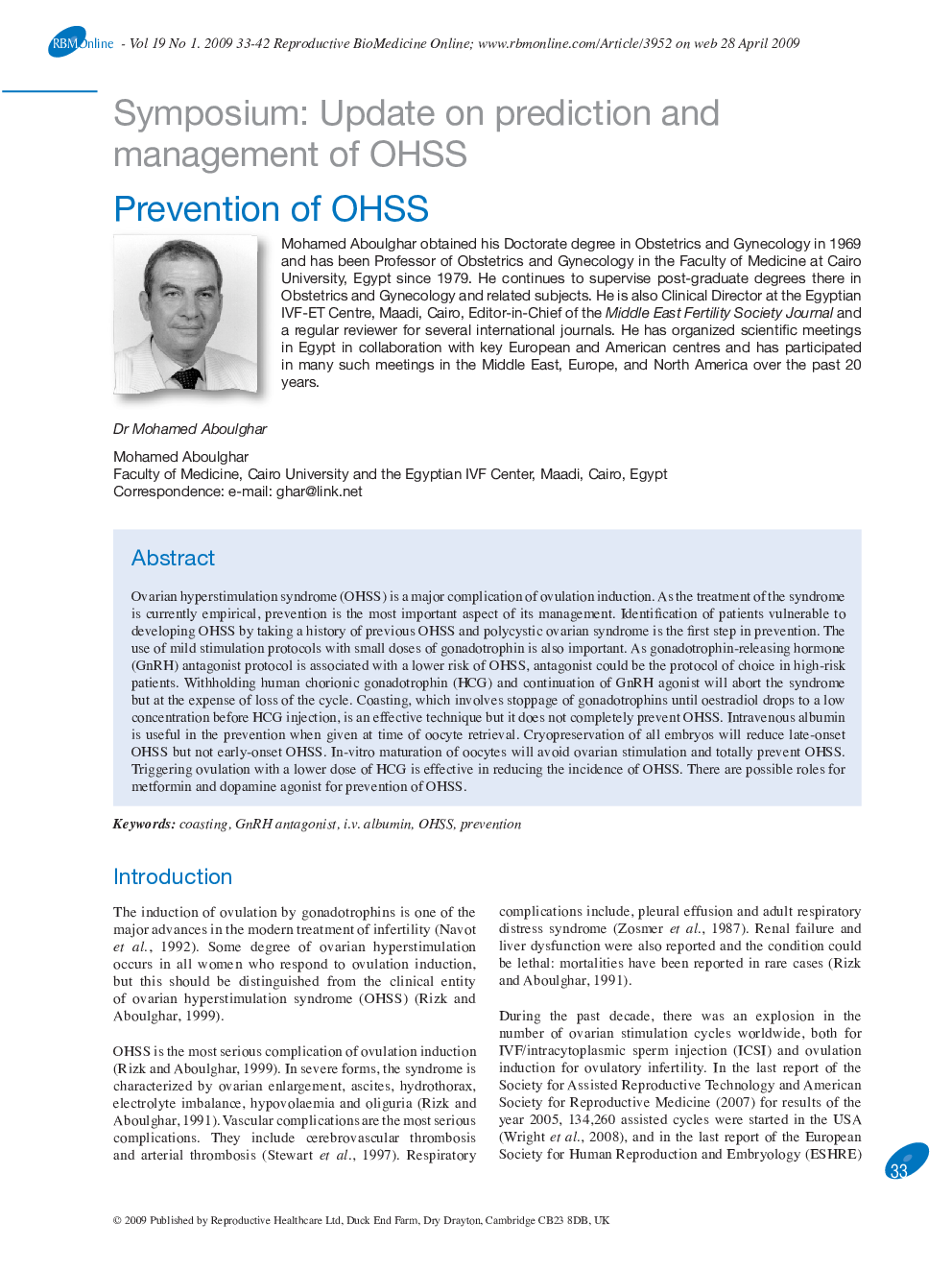| Article ID | Journal | Published Year | Pages | File Type |
|---|---|---|---|---|
| 3972255 | Reproductive BioMedicine Online | 2009 | 10 Pages |
Ovarian hyperstimulation syndrome (OHSS) is a major complication of ovulation induction. As the treatment of the syndrome is currently empirical, prevention is the most important aspect of its management. Identification of patients vulnerable to developing OHSS by taking a history of previous OHSS and polycystic ovarian syndrome is the first step in prevention. The use of mild stimulation protocols with small doses of gonadotrophin is also important. As gonadotrophin-releasing hormone (GnRH) antagonist protocol is associated with a lower risk of OHSS, antagonist could be the protocol of choice in high-risk patients. Withholding human chorionic gonadotrophin (HCG) and continuation of GnRH agonist will abort the syndrome but at the expense of loss of the cycle. Coasting, which involves stoppage of gonadotrophins until oestradiol drops to a low concentration before HCG injection, is an effective technique but it does not completely prevent OHSS. Intravenous albumin is useful in the prevention when given at time of oocyte retrieval. Cryopreservation of all embryos will reduce late-onset OHSS but not early-onset OHSS. In-vitro maturation of oocytes will avoid ovarian stimulation and totally prevent OHSS. Triggering ovulation with a lower dose of HCG is effective in reducing the incidence of OHSS. There are possible roles for metformin and dopamine agonist for prevention of OHSS.
